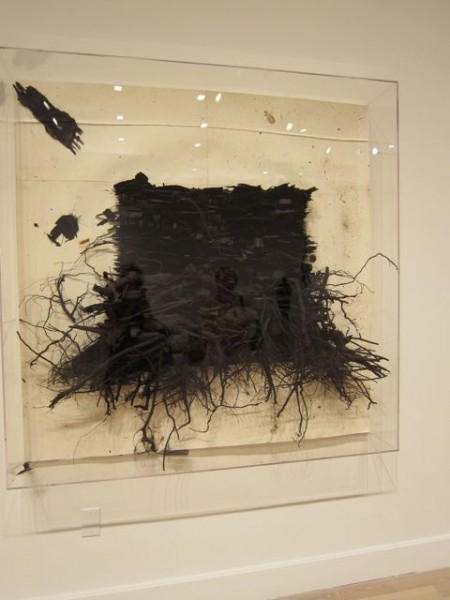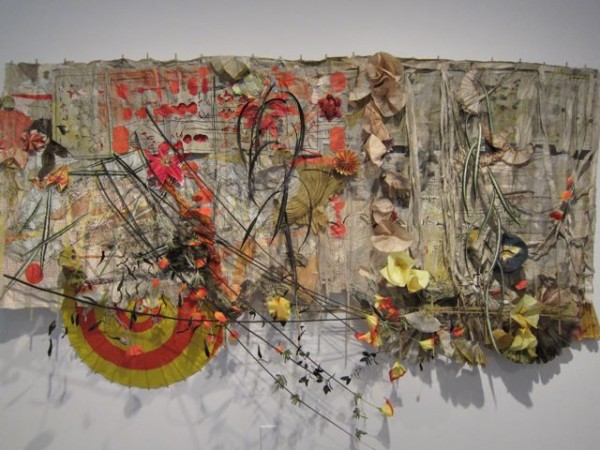Sunday at the Weatherspoon

Of the many places in North Carolina to enjoy looking at art, my favorite is the Weatherspoon in Greensboro. I like to tell the story that one year I went to a dozen museums in Paris and a dozen museums in New York, and that year my favorite museum experience was at the Weatherspoon . They were showing a kind of book made of antique domestic textiles reworked by Louise Bourgeois into tight, needle sharp abstractions. The pages were hung separately as low level relief and you felt every pore in the weave of the linen. They stunned me. I would have loved to have looked at them every day for the rest of my life.
Today I had the pleasure of a visit to the Weatherspoon with three of my best friends. A sculpture show from the museum’s collection filled the main gallery . Just inside the entrance a group of pieces spoke to the relationship between sculpture and architecture. A small Sol Lewitt hung from the wall, white, perfectly crafted of wood. It’s intimate scale and materiality made it the most affecting Lewitt I ever remember seeing.
Looking back over my notes from the show, it amazes me how many of the pieces touched me. I was reminded of the Bourgeois low level relief when I saw a wall piece created from scrap fabric by Kent and Kevin Young, which was quietly and beautifully subversive. Leonardo Drew’s sculpture Number 119D, composed of blackened limbs and natural forms, rising out of a piece of good paper was rich– a complex black that created a play of shadow around and within itself and evoked the bank of a river.
There were several sensuous wood sculptures that commanded my attention… an Alice Adams torqued column, and a sinuous, clean piece by Michael Creighton. The last piece I saw, leaving the gallery, was a magnificiently ethereal Judy Pfaff: Lemongrass– which incorporated delicate paper, silk flowers, bamboo and a parasol. It appeared to float in space like a silk kimono animated by a breeze.

Looking at sculpture makes me want to go home and make something. The sensuousness of metal meeting wood, of gaps bridged and shaped with sandpaper, the translucency of fiberglass–simultaneously fiber and glass, the fragility of paper, lure me into communion and I am nudged by the sculptor within.
Because it’s the Weatherspoon, which always surprises, and always lays the big banquet table for its visitors, I find myself next being challenged morally. There is, downstairs, a two room exhibition of very strong and poignant work related to the Mexican American border, immigration, gun violence and xenophobia. And if that’s not enough to stir up the afternoon, You could top it off with a lyrical visit to the Cote d’Azure with Matisse and company in the upstairs galleries.
I asked a friend who is a museum curator– WHY is the Weatherspoon so amazing? Why does it always surprise and delight me? Why is it the best museum in the university system and perhaps in the state? The curator’s response was that it’s because of its director, Nancy Doll. Hats off to Nancy Doll. You have brought some serious delight into my life. I am grateful you are here in the same time and space as me. I am grateful that you steer a museum that serves a student body so thousands of young people go out into the world expecting that level of excellence to be the norm. Thank you for another deep and delicious afternoon in the company of great art.

